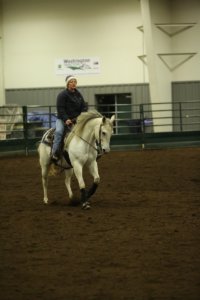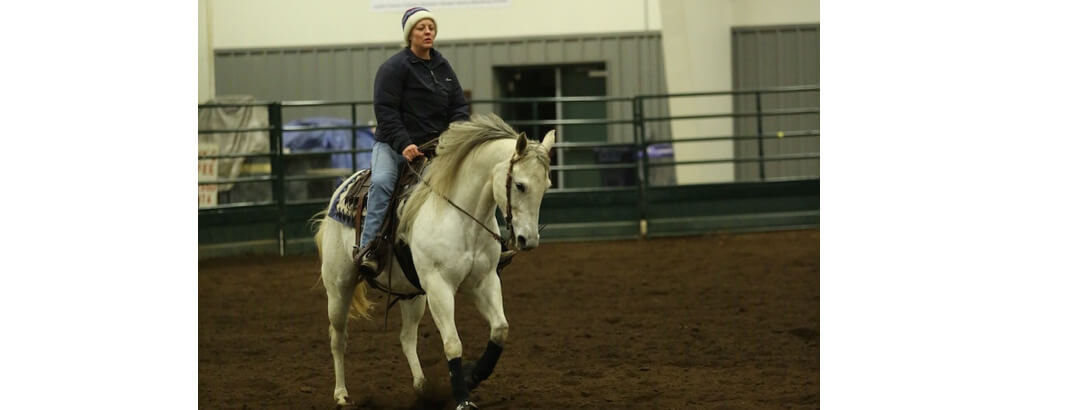Part 1: New Research Sheds Light on a Centuries Old Condition
by Dave Sauter, DVM

During early December, the American Association of Equine Practitioners (AAEP) held its 58th annual convention in Anaheim, California. One of the highlights of the annual meeting is the Frank J. Milne State-of-the-Art Lecture, which debuted in 1997. This award and lecture is in honor of Frank Milne, past president of the AAEP and distinguished life time member. The lecture features state of the art information on subjects and techniques important to the equine veterinary profession. This year’s recipient of the award was Dr. Stephanie Valberg from the University of Minnesota, who has been a leading researcher on the subject of tying-up in horses for the last thirty years. She is both a DVM and a PhD and has been awarded numerous awards over the years. Her three hour lecture was titled “Muscling in on the cause of Tying-up.”
Dr. Valberg began her lecture by reviewing the history behind our level of understanding of the disease when she started her research thirty years ago. Although tying-up dates back centuries, it was during the 19th century it became well documented in the literature. Tying-up was common and catastrophic during the 1800’s and early 1900’s, when society was very dependent on horses. Death rates were as high as 50%. There was much speculation about the cause. Because often the urine was coffee colored during an episode of tying-up and there was pain over the loins, the kidneys were implicated as a cause and the disease was named azoturia, which means “excess nitrogen in the urine.” Other theories were proposed, but early in the 20th century it was determined that the coffee color in affected horses was not excess nitrogen but myoglobin released from damaged muscle. Myoglobin is a special protein in muscle that carries oxygen, similar to hemoglobin in red blood cells that carries oxygen to other tissues. A theory was proposed that lasted for 60 years that a high grain diet fed on rest days followed by exercise led to lactic acidosis causing muscle damage. “Monday morning” disease was coined since many horses had Sundays off yet got their full ration of grain. On Monday they’d suffer from tying-up. Over the years, patterns were noticed between different groups, such as between light horses and drafts, that didn’t fit with this theory. During the 1980’s, studies showed that lactic acidosis was not the cause of tying-up. Many other possibilities were tested and disproved.
Dr. Valberg pointed out three major scientific developments during the late 20th century that were game changers in research on tying-up. One was an explosion in research of human neuromuscular disorders which led to the development of muscle biopsy techniques and advanced methods of laboratory analysis of equine muscle tissue. Second was the development of high tech high speed treadmills allowing researchers to exercise horses in a controlled, safe environment suitable for scientific study. Finally, the equine genome mapping project uncovered the genetic basis for at least some types of tying-up. These breakthroughs have been enabling science to unravel the mysteries of tying-up, confirming what years of observation had been suggesting, that tying-up is not simply one problem but rather several different problems with similar symptoms.
Dr. Valberg went on to list several distinct types of tying-up that have been identified so far. These include PSSM—Polysaccharide Storage Myopathy, first recognized as a specific muscle disease of Quarter Horse related breeds in 1992, and two subtypes of PSSM found in several other breeds.
Tune in next month to learn more about these conditions, how to manage them, and keys to prevention.
Published February 2013 Issue

Dave Sauter is a Minnesota native and graduated from the University of Minnesota in 1987. Following graduation he interned at Rood and Riddle Equine Hospital in Lexington, Kentucky. After this internship, he continued to work exclusively with horses for another five years in Kentucky before moving out West and joining Kulshan Veterinary Hospital in Lynden, WA. He is a member of the AAEP, AVMA and the WSVMA. For more information about Kulshan Veterinary Hospital call 360-354-5095 or email drkulshan@msn.com. www.KulshanVet.com


